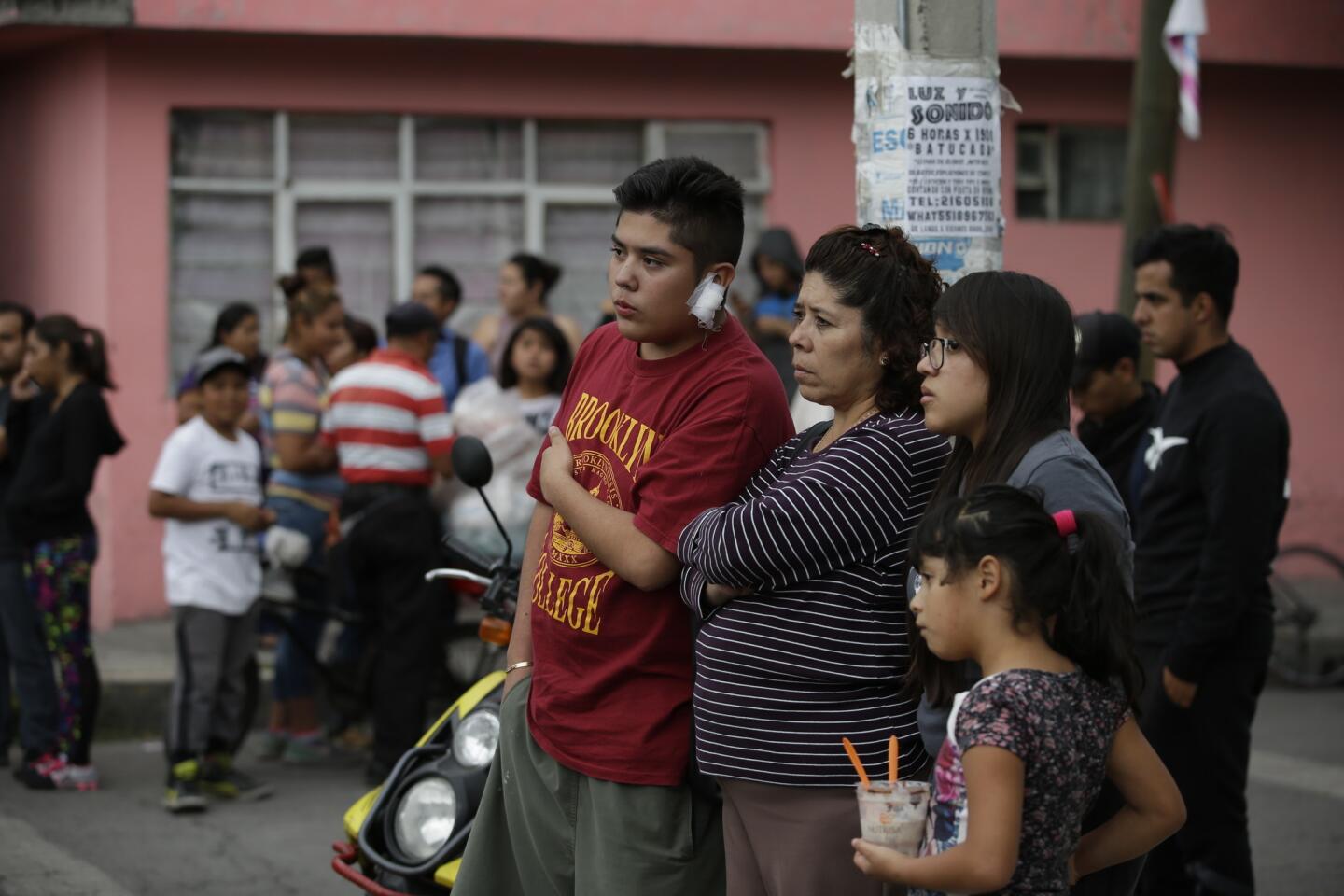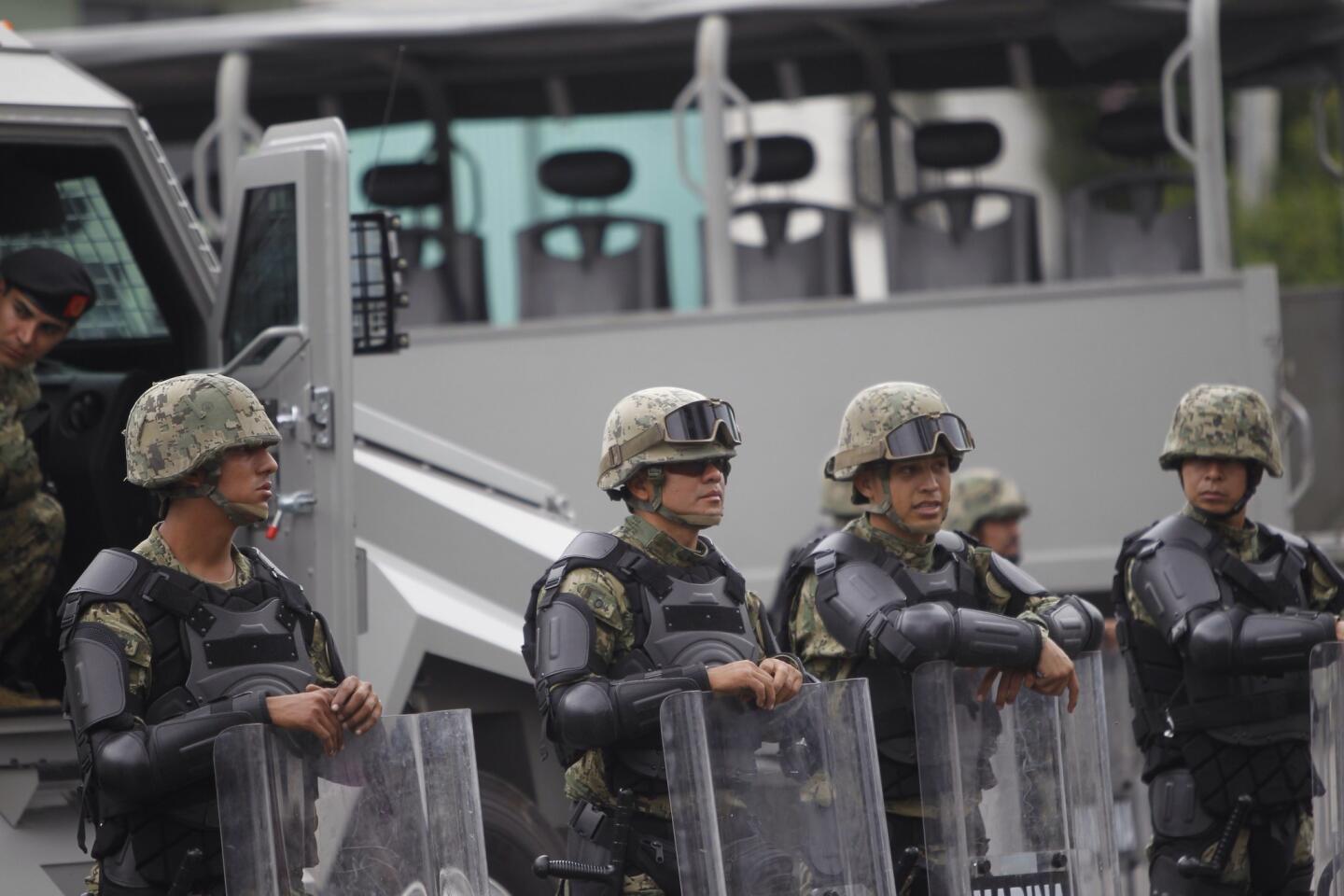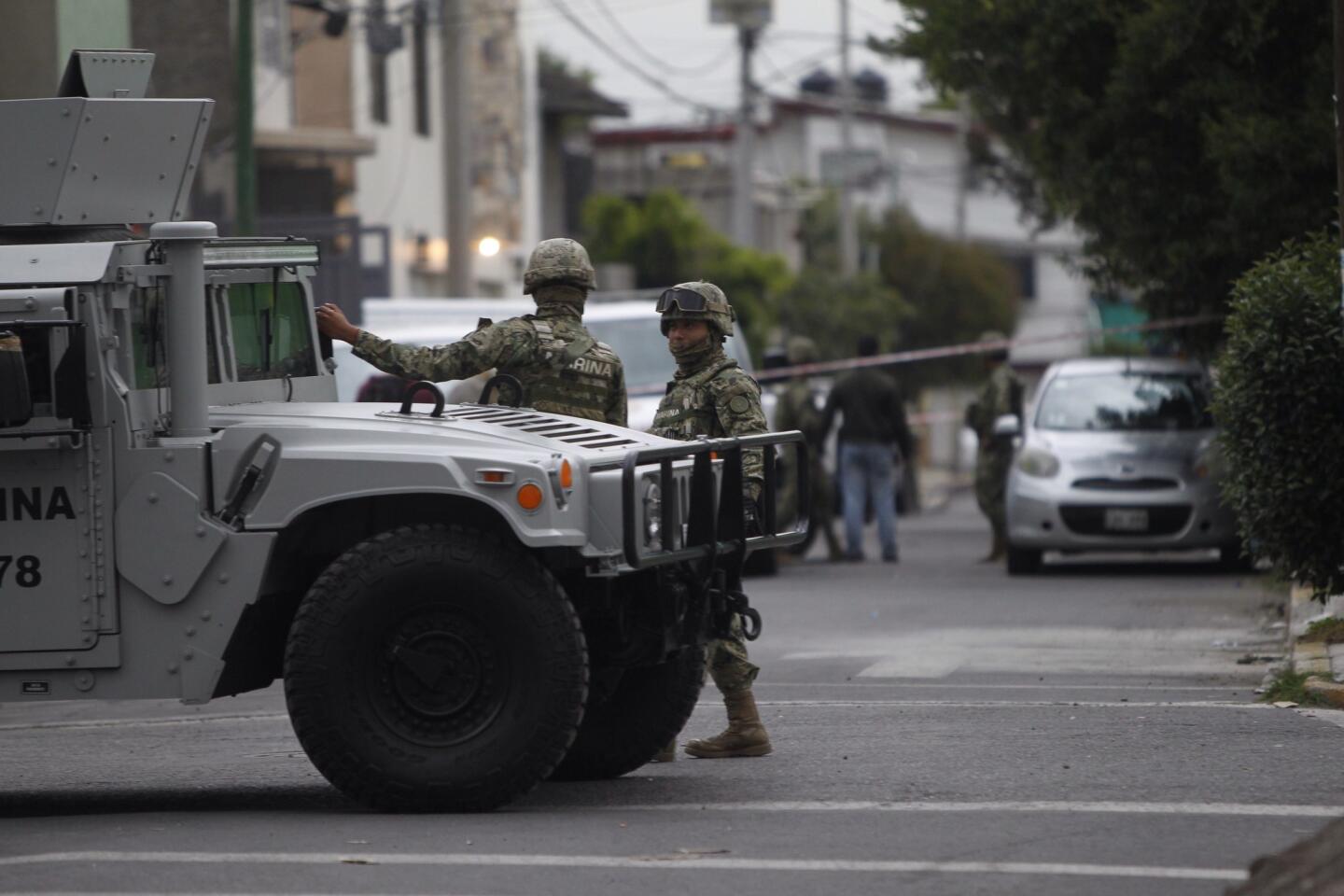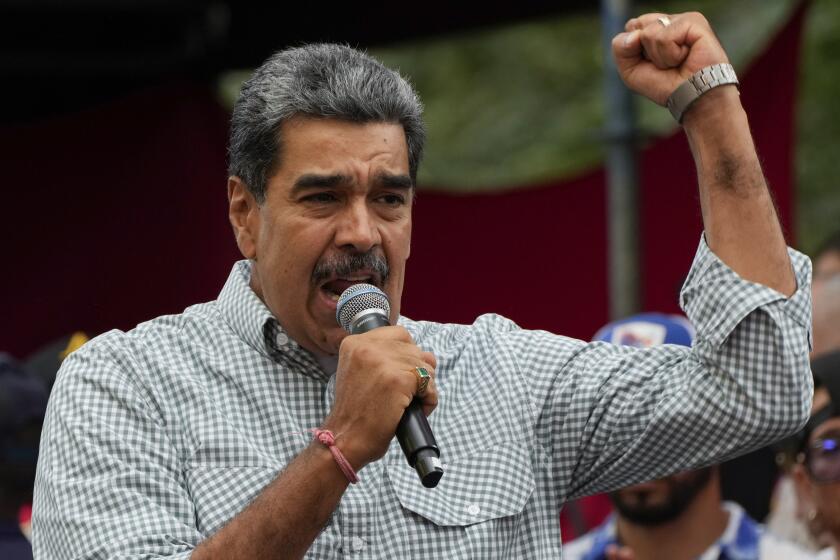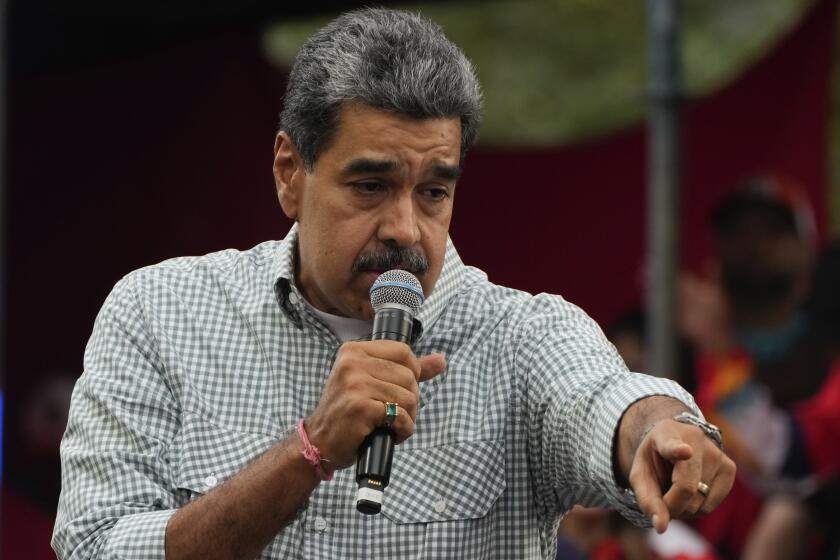Shootout raises anew specter of cartels in Mexico City
It was still daylight when a Mexican military patrol was attacked on the city streets, leading to what authorities described as a fierce firefight with a heavily armed gang.
Soon the Internet and newspapers were showing images of the gory aftermath: the bloodstained bodies of the gang leader and four of his confederates on the floor of a carport, a rifle next to his head and bundles that appeared to be drugs on a nearby folding table.
Supporters of the slain capo torched vehicles on the streets in an effort to thwart police patrols advancing through the neighborhood.
It was hardly an unusual scene in a country that has been ravaged by drug violence. Except the violence Thursday unfolded in Mexico City, which has generally been spared the mass killings, cartel savagery and street battles of the country’s drug wars.
Mexico City, home of the nation’s political and economic elite, often appeared on a distinct orbit from the turbulent constellation of narco states near the U.S. border and elsewhere.
But that sense of exceptionalism took a hit with the firefight and ensuing violence that overtook the sprawling Tlahuac district, a gritty conglomeration of working-class neighborhoods on the city’s eastern edge.
The gang that attacked the Navy marines — key participants in the country’s more than decade-long battle with the cartels — controlled drug trafficking, extortion, kidnapping and other illegal enterprises in the area, according to official accounts.
The gunbattle that followed , authorities said, left eight gangsters dead, among them their leader, identified as 48-year-old Felipe de Jesus Perez Luna, known as El Ojos, or the Eyes. There was no official word on any military casualties in the shootout.
But the episode did not end there.
Apparent supporters of the slain gang boss, led by men driving motorcycle taxis, blocked entrances to the Conchita Zipotitlan neighborhood where the Navy assault took place. They torched several buses and a truck, along with other vehicles, in an effort to set up “narco-bloqueos” to restrict police access.
A security tape showed at least one assailant tossing a Molotov cocktail into a minibus, though the passengers managed to flee without serious injury.
In the normally bustling district, storekeepers shuttered their shops and people stayed indoors as hundreds of police reinforcements in riot gear converged on the streets.
The area looked like a war zone: Police in riot gear and marines in Humvees patrolled streets dotted with burning vehicles as a helicopter hovered overhead and sirens rang out.
Police corralled dozens of motorcycle taxis, suspecting their drivers of collaboration with the criminal gang whose leadership had just been eliminated.
Mexico City has a serious crime problem, but it had rarely experienced anything like this.
Between January-May, the capital’s rate of homicide per 100,000 residents was 3.80 — compared to 17.35 in the nation as a whole, according to government statistics.
Cartel leaders themselves are said to maintain a paz mafiosa, or mafia truce, among themselves so as not to draw more ire from law enforcement and the military.
By early Friday, relative tranquility had returned to the streets of Tlahuac. Police with blue berets and plastic shields guarded the reopened Nopalera metro station, which had been shuttered because of the violence. Other officers manned checkpoints as rifle-bearing colleagues in blue pickups rode up and down the main drag.
As a precaution, schools were closed Friday throughout the district. But the colorful fleet of motorcycle taxis was once again taking residents to and from the metro station. The charred vehicles from Friday’s unrest had been cleared from the streets.
On the political front, a wave of criticism and ridicule greeted Mexico City Mayor Miguel Angel Mancera and his insistence that cartels did not operate in the city.
“Reality has overtaken the comments of Mancera and demonstrates that in Mexico City organized crime operates through the narco trafficker cartels,” Sen. Ernesto Cordero of the conservative opposition National Action Party told reporters.
But Mancera, a member of the left-leaning opposition Party of the Democratic Revolution, said the criminal group headed by El Ojos was a small-time operation compared to the sophisticated cartels that manage the international chain of drug production and distribution.
“This is not about the presence of a cartel in the city; it is a band of small-level narcos,” Mancera said in a radio interview. “Obviously, this is a big organization and we are not minimizing it. … But we are not talking about the presence of a cartel in the city.”
However, even Mancera conceded that some operatives targeted in Thursday’s raid here likely had links to the bigger syndicates.
The cartels reportedly used an array of motorcycle taxi drivers loyal to the mafia to deliver drugs to clients and look out for police.
“Everyone knows that el señor gave work to the moto-taxis,” said Rosamaria, a 51-year-old resident who did not want her full name used, referring to the late gang leader. “That’s why they defended him.”
As word of the gang leader’s death spread, handwritten signs began to in the neighborhood saying that “el señor” was not a criminal and “helped the people.”
Even before his death, the late capo had been lionized in several ballads, or corridos.
An editorial in the Unomasuno tabloid voiced the hope that the fall of the gang leader would not trigger “a violent struggle” in Mexico City for control of his former empire — similar to the kinds of wars that have broken out when capos have fallen in the violence-plagued states of Sinaloa, Tamaulipas and Guerrero.
At the gang leader’s former compound, a surreal scene unfolded Friday as journalists entered the covered car park where five of the bodies — including that of the purported chief mafioso — were shown in photographs.
There were no police or military guards present, no yellow tape blocking off the scene, where considerable forensic evidence still remained. Reporters and cameramen tramped about.
The corpses had been removed, but tile floors were streaked with blood and holes pocked the walls.
In an adjoining office, journalists pored through notebooks, knickknacks, sheets of paper and other items scattered about the room. At least half a dozen portable scales were found on the desk. Several ledgers with rows of numbers appeared to represent payments.
Behind the desk was an image of a scantily clad Justice, wearing a blindfold and holding a scale in each hand.
Some neighbors clearly felt justice was lacking in this case.
“The police committed an injustice,” said Evelia, a resident who said she was outraged that the gang boss was killed. “He and the others helped people.”
Still, not everyone seemed to mourn the passing of El Ojos.
“Everyone knew that this man sold drugs, but no one denounced him, because he did favors for people,” said Ivette, 31, who was passing by the gang leader’s compound with her four children. “But I never asked him for help.”
To read the article in Spanish, click here
Cecilia Sanchez of The Times’ Mexico City bureau contributed to this report.
Twitter: @mcdneville
More to Read
Sign up for Essential California
The most important California stories and recommendations in your inbox every morning.
You may occasionally receive promotional content from the Los Angeles Times.





